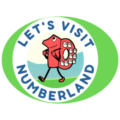Let’s visit Numberland
⭐ Learn how to bridge the emotional world of young children with the abstract language of maths
⭐ Learn how to start an irresistible journey full of maths and cross-curricular opportunities such as language, motor skills, soft skills.
What is Let’s visit Numberland?

Let’s visit Numberland is the irresistible translation of crucial basic mathematical knowledge into the emotional world of 3 to 5 year old children.
We simply play that numbers are alive and have a home – just like us!
We build and explore this home, which happens to be packed with maths, connecting to whatever we find interesting or useful…
We bring in anything children like: stories, playing, crafting, exploring …
That way, Numberland helps to build a bridge from the imaginative and emotional world of 3 to 5 year olds over to the formal, abstract language of maths. Supporting a thorough understanding of essential basic maths plus confidence and motivation. Engaging, opening and preparing for any further maths to come.
More than that, Numberland triggers communication, reasoning, helping each other and can be used to deliberately address an abundant choice of content. It is a starting point for cross curricular activities and support the transition to further, more abstract maths learning.
You can use it as a group activity or as individual work (or both), bilingualism, SEN, inclusion, therapy.
For maximum flexibility, you can choose among large and small, coloured and b/w resources.
Numberland can help you with all these hot early childhood topics:
Number sense, Subitising, Numeracy, Shapes, Tenframes, Place holder, Partitioning …
Language … Soft skills … not to forget a happy childhood full of free play!
How Let’s visit Numberland puts relevant maths into a child relevant context
The numbers Zero to Ten live here as happy neighbours and their homes display essential number sense knowledge in an organised and structured way: cardinal aspect, invariancy, ordinal aspect, subitising, partitioning, shapes.
You can use each of these elements according to your individual needs. Usually, children travel to Numberland by visiting one number after the other.
Happy neighbours with gardens full of maths!
We turn abstract symbols into living individuals. Because for young children, everything is alive.
Each number is unique – Four with 4 braids, Five has 5 buttons, Ten has a backpack with 10 pockets …
Of course, Number Zero is part of the team.
The numbers zero to ten live along Number Street as happy neighbours.
Each number has individual, but not too loud features.
- a house with a house number and windows
- a geometrically shaped garden
- a flowerbed / garden frame

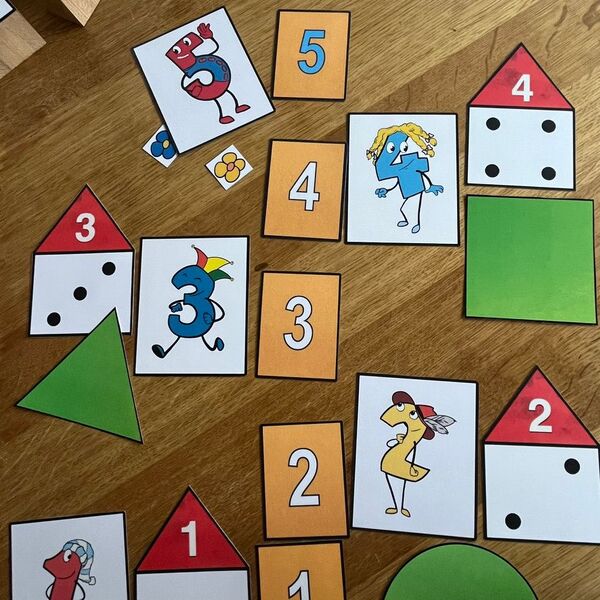


Number Line Street
… stands for the Number Line and shows the order of the numbers, but has a lot more.
When we decorate Number Street, we relate to how numbers represent a quantity. We also see the pattern of always one more/one less.
Tip: A large Number Street on the floor enables children to experience numbers with their entire body! We can play lots of active game with and on Number Street! It can also be our way into and out of Numberland.
Always include zero from the start! Later, we extend Number Street up to twenty.

Gardens full of maths
Look, Five, what the children found for my home! Everything matches six:
6 pebbles, 6 stars, six buttons, a tower with 3 red and 3 yellow blocks. Also 6 trees, of which 4 are conifers. -> 6 is always six, no matter what it consists of or how we arrange it!
My house has the house number and two floors with 5 + 1 windows: like the hands of children.
Yes, the cow is also allowed to graze in my hexagon garden! As it would in Number One’s, Number Four’s, even Number Seven’s garden. Why?! Let’s think about it and reason! 🙂
Fives frames and tens frames
… are so much more engaging when we turn them into garden beds or flower beds! Of course, gardening here requires rules…
We play gardening – starting very simple and then more elaborate, to ensure children have a smooth ride on their (long) way from their concrete to the abstract understanding. For us, the counters start with being flowers or vegetables that we plant, water, prune, buy and sell with care. This is also a chance to speak about colours.
While we garden with our number friends, we move towards organising our internal pictures of number representation, quantities, partitioning – also subitising and number bonds.




Number Bonds
Number Four contemplates: Who could be my gardening buddy?
Children explore who could garden together to fill the entire garden bed!
Thus, we create emotional internal pictures! Moving on to more abstract ways of number representation becomes much easier.
What will happen, when Number Four and Number Seven decide to garden together?? Let’s find out!

Oh no, Trickster was here!
To become confident learners, children need to know that making mistakes is absolutely no problem.
Our mischievous Trickster ever and again messes up Numberland, and children love to spot his tricks and correct them. Trickster serves the Good-versus-Bad thinking of children.
If the children want support to fix the mistakes, they can call Numberilly for help …

Shapes
The gardens introduce shapes and make them meaningful to children. And it is great to explore how they relate to the specific number.
Why does Number One have a circular garden? Why would Number Two live either in a semicircle or in an ellipse?!
Let’s make a circle with our full bodies!
Children love stories!
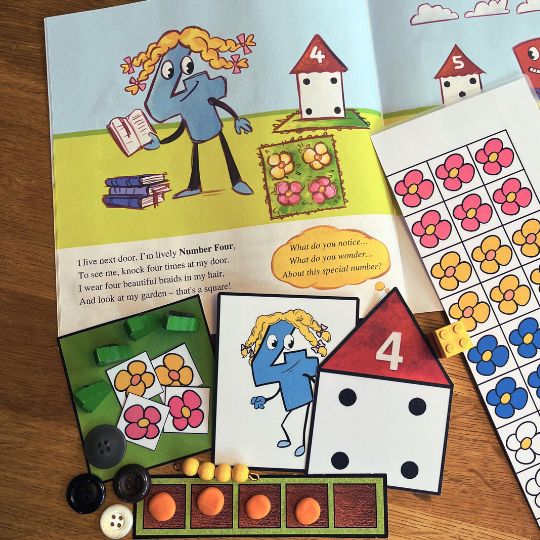
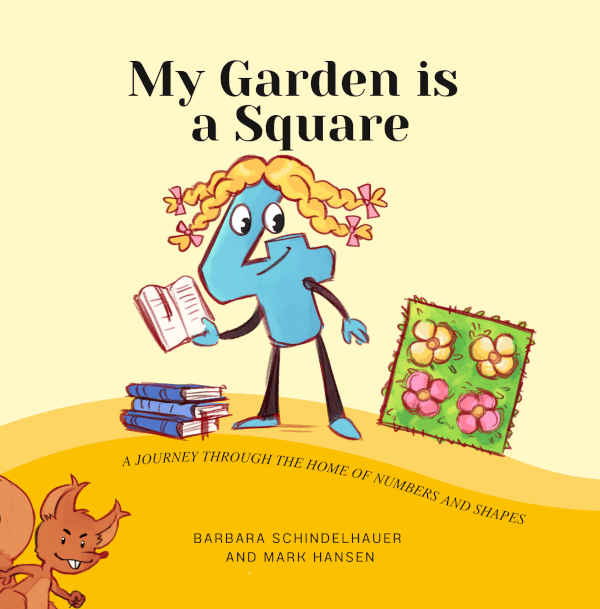

Children love stories and books – so we created My Garden is a Square.
Our rhyming children’s picture book is intended as an eye opener and conversation starter.
The children learn about the home of their number friends and are invited to detect details and relate to the real world.
The book invites the children to craft their own Numberland or Numbertown and thus turn abstract numbers into tangible, happy role play…
More about the book and resources
Of course, you can use any book or story and, of course, you can craft your own resources the way you/your children prefer. We only ask you to follow the thought through design principles.
Numbertown: Relevant maths translated into the world of children and clearly structured and organised!
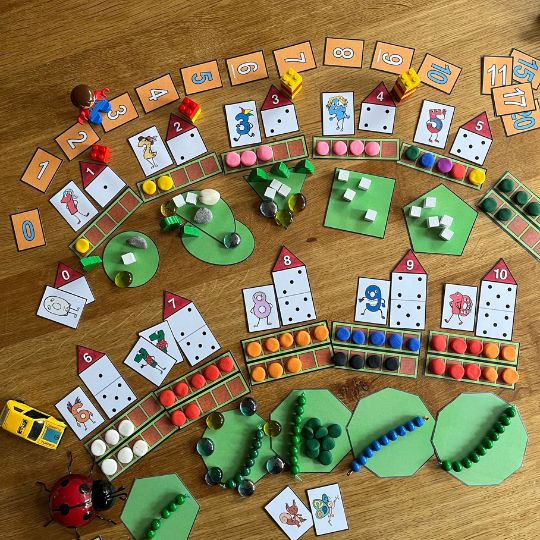
A complete Number Town will look something like in the picture, varying in its complexity according to age group and possible cognitive load.
Each time, relevant knowledge is organised and displayed in a way that helps children to develop correct and positive inner pictures. Children can then build on this structure and any further maths can properly connect.
You can use each of the Numberland elements according to your individual needs. Let’s visit Numberland is not a strict programme you had to follow, though there are suggestions on how to go about it.
Usually, children travel to Numberland by visiting one number after the other so that Number Town will gradually grow from one number to the next, allowing time to explore and address whatever and as much as needed.

As I said: A neighbourhood full of maths! And tons of opportunity for active games, general knowledge, creativity, cross-curricular activities.
And voilà: The bridge from the emotional world of young children over to the abstract language of maths is becoming joyful and solid! Because we put things into a context!
Want to get started with Numberland? Learn more?
-> Download your free trial pack: Number One cutout, wall poster, numeral writing practice + colour sheet.
Follow this link to read about Numberland in various languages …
kindly translated by Numberland enthusiasts around the world.
